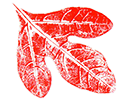The springbeauty (Claytonia virginica) is native to most of the eastern half of North America. It can be found growing in rich, moist woods and occasionally in semi-shaded lawns that don’t get mowed early in the season. Springbeauties prefer rich soils full of organic matter and hummus, but can tolerate less than ideal conditions better than many other species of early spring, woodland wildflowers.

In Kentucky, springbeauties begin blooming in March and can sometimes be found blooming as late as May. Exactly when they bloom each year, or from one location to the next, will depend on when the weather starts to warm up in the early spring. They are among our earliest blooming wildflowers and belong to a larger group collectively termed “spring ephemerals.” Spring ephemeral wildflowers take advantage of the increased light reaching the forest floor before the trees leaf out. As the trees leaf out and the amount of shade increases, the leaves of many spring ephemerals (including those of springbeauties) will die back and disappear.
Springbeauty flowers emerge in a loose cluster on a short stalk that grows out of a small clump of grass-like leaves. The flowers have 5 petals that can range in color from white to a rosy-pink. Each petal has pink lines running from the tip of the petal to the base of the petal. The pink lines can range in color from a very pale pink to a darker rosy-pink. Like many spring ephemerals, springbeauty flowers open wide on sunny days, but close at night and on cloudy days. Each flower typically only lasts for, at most, a week.
Although springbeauties have both male and female parts, both parts aren’t active at the same time. The 5 stamens (male parts) produce pollen for the first day that the flower is open. After the first day, the stamens stop producing pollen and the stigma (female part) becomes receptive for the next few days. This sequence helps makes sure that the flower doesn’t pollinate itself and thus results in greater genetic diversity, but is also why having an adequate number of pollinators visiting the flowers is so important.
Regardless of whether the flower is in its male phase or female phase, springbeauties produce nectar in nectaries located at the base of each petal. (If you look closely at the base of the petals, you’ll see a yellow spot which is where the nectaries are located.) A wide variety of smaller native bees and honey bees will visit springbeauties to gather nectar and pollen. Syrphid flies are also common visitors to springbeauty flowers. A study conducted in central Illinois in the 1970s recorded 22 different species visiting springbeauty flowers.
Once pollinated, the flowers will produce small black seeds which will readily self-seed an area if the conditions are favorable. That is why it is often possible to find loose carpets of springbeauties blooming in undisturbed areas. The seeds develop into small corms which in pre-Colonial days were often dug up and eaten by many Native American tribes. By early to mid-summer, the leaves and all traces of the flower have typically died back and the corm will remain dormant until the next spring when it will once again begin growing its grass-like leaves and sending up its flowering stalk.

This article was part of Shannon’s original Kentucky Pollinators and Backyard Wildlife blog which evolved into the blog for Backyard Ecology.

Backyard Ecology: Exploring Nature in Your Backyard
Nature isn’t just “out there.” It’s all around us, including right outside our doors. Hi, my name is Shannon Trimboli, and I am the host of Backyard Ecology. I live in southcentral Kentucky and am a wildlife biologist, educator, author, beekeeper, and owner of a nursery specializing in plants for pollinators and wildlife conservation. I invite you to join me as we ignite our curiosity and natural wonder, explore our yards and communities, and improve our local pollinator and wildlife habitat. Learn more or subscribe to my email list at www.backyardecology.net.

Leave a Reply